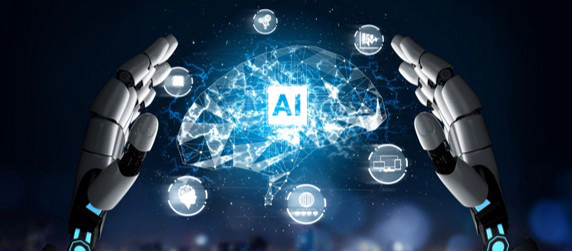Table of Contents
- Introduction
- Trend 1: Artificial Intelligence (AI) and Machine Learning (ML)
- Trend 2: Employee Experience (EX)
- Trend 3: Data Analytics
- Trend 4: Virtual and Augmented Reality (VR/AR)
- Trend 5: Diversity, Equity, and Inclusion (DEI)
- Additionally: Mobile Optimization
- Conclusion
Introduction
In the current employment landscape, where there is a scarcity of highly skilled and sought-after individuals, it is essential for companies to prioritize not only the acquisition but also the ongoing engagement of potential employees.
The HRTECH industry is continually evolving, and staying on top of the latest trends can be a challenge. With the rapid pace of technological advancements, staying on top of the latest trends can be a challenge. However, it’s essential for organizations to keep up with the latest developments to remain competitive in the talent market.
In this whitepaper, we will explore the top five trends currently shaping the HRTECH industry and what they mean for organizations. These trends include AI and ML, employee experience, data analytics, VR/AR, and DEI. By understanding these trends and their implications, organizations can leverage the latest HRTECH solutions to improve their hiring and retention efforts, enhance employee engagement and satisfaction, and develop more effective talent management strategies.
As the industry continues to evolve, it’s critical for organizations to stay up to date with the latest developments and embrace new technologies that can help them achieve their HR objectives. By doing so, they can attract and retain top talent, streamline HR processes, and create a more efficient and effective workforce.

Trend 1: Artificial Intelligence (AI) and Machine Learning (ML)
AI and ML are becoming increasingly prevalent in the HRTECH industry. These technologies are being used to automate tasks, enhance candidate selection processes, and provide insights into employee engagement and retention. AI-powered chatbots are also being used to answer candidate and employee questions, improve communication, and streamline HR processes.
The HRTECH industry is witnessing a significant shift towards the adoption of AI and ML technologies. Organizations are leveraging these advanced technologies to automate routine HR tasks, reduce human bias, enhance candidate selection processes, and gain insights into employee engagement and retention.
One of the most popular use cases of AI and ML in the HRTECH industry is the development of AI-powered chatbots. These chatbots are being used to improve communication between candidates, employees, and HR teams. They can answer frequently asked questions, provide guidance on company policies and procedures, and even schedule interviews. The use of chatbots has helped organizations streamline their HR processes, reduce response times, and improve candidate and employee experiences.
In addition to chatbots, AI and ML are also being used to enhance candidate selection processes. These technologies can analyze resumes, cover letters, and other applicant information to identify top candidates based on skills, experience, and qualifications. This helps organizations reduce the time and effort required for manual screening, while also reducing human bias in the selection process.
Moreover, data analytics powered by AI and ML algorithms are enabling organizations to gain insights into employee engagement and retention. These insights can be used to identify patterns and trends related to employee satisfaction, productivity, and turnover. By analyzing these insights, organizations can develop more targeted strategies for improving employee engagement and retention, ultimately leading to a more productive and motivated workforce.
Overall, AI and ML are transforming the HRTECH industry by providing innovative solutions for automating HR processes, enhancing candidate selection processes, and improving employee engagement and retention. By embracing these technologies, organizations can stay competitive and better position themselves to attract and retain top talent in a rapidly evolving talent market.


Trend 2: Employee Experience (EX)
Employee experience (EX) is becoming a significant focus for organizations, with HRTECH solutions being developed to enhance employee engagement and satisfaction. This includes tools for onboarding, training and development, performance management, and recognition and rewards programs
Employee experience (EX) has become a critical focus area for organizations looking to attract, retain and engage top talent. As such, many HRTECH solutions are being developed to enhance employee engagement and satisfaction by improving the overall employee experience.
These HRTECH solutions cover a wide range of areas including onboarding, training and development, performance management, and recognition and rewards programs. By streamlining and automating these processes, organizations can create a more positive and seamless experience for their employees.
For example, modern onboarding tools powered by HRTECH can provide new hires with a smooth and efficient onboarding experience by automating the paperwork process and providing access to relevant company information and resources. This enables new hires to quickly understand their role and responsibilities and integrate into the company culture. Similarly, HRTECH-powered training and development solutions are helping organizations provide their employees with access to a variety of learning resources, including online training modules, webinars, and workshops. These solutions enable employees to acquire new skills and knowledge, ultimately improving their job performance and increasing their job satisfaction.
In addition, HRTECH-powered performance management solutions are being developed to provide employees with regular feedback and performance evaluations. This helps employees understand their strengths and areas for improvement and allows them to set clear goals for career development and advancement.
Finally, recognition and rewards programs powered by HRTECH solutions are becoming increasingly popular. These solutions provide employees with recognition for their hard work and achievements, motivating them to continue performing at their best. HRTECH-powered recognition and rewards programs can be customized to suit the specific needs of an organization and can include incentives such as bonuses, promotions, and other rewards.
Overall, HRTECH solutions are helping organizations create a more positive and engaging employee experience, ultimately leading to a more productive and motivated workforce. By focusing on employee experience and leveraging HRTECH solutions, organizations can better attract and retain top talent, ultimately leading to their success in a competitive talent market.


Trend 3: Data Analytics
Data analytics is another significant trend in the HRTECH industry. By analyzing data from various HR processes and systems, organizations can gain insights into workforce trends, employee engagement, and the effectiveness of HR initiatives.
Data analytics can also be used to identify skills gaps and talent shortages, which can help organizations develop effective talent management strategies.
Data analytics is a rapidly growing trend in the HRTECH industry. Organizations are using data analytics to gain insights into workforce trends, employee engagement, and the effectiveness of HR initiatives. By analyzing data from various HR processes and systems, organizations can better understand their workforce and make informed decisions that enhance their overall performance.
One of the most popular use cases of data analytics in HRTECH is for workforce planning. HRTECH solutions that leverage data analytics can help organizations identify skills gaps and talent shortages, which can help inform effective talent management strategies. This enables organizations to better anticipate and plan for future workforce needs, ultimately leading to a more agile and efficient organization.
In addition, data analytics can be used to gain insights into employee engagement and sentiment. By analyzing data from employee surveys, feedback forms, and other sources, organizations can better understand the factors that contribute to employee satisfaction and motivation. This can help inform the development of HR initiatives and strategies aimed at improving employee engagement and retention.
Moreover, data analytics can be used to measure the effectiveness of HR initiatives and programs. For example, by tracking key performance indicators (KPIs) such as employee turnover rates, organizations can assess the impact of their HR initiatives and adjust as necessary to optimize their outcomes.
Furthermore, data analytics can help organizations identify patterns and trends related to employee performance, enabling managers to make informed decisions about promotions, training and development, and other aspects of talent management.
Overall, data analytics is an increasingly important trend in the HRTECH industry, offering organizations valuable insights into their workforce and enabling them to make data-driven decisions that improve employee engagement, talent management, and organizational performance. By leveraging data analytics, organizations can stay competitive and better position themselves to attract and retain top talent in a rapidly evolving talent market.


Trend 4: Virtual and Augmented Reality (VR/AR)
Virtual and augmented reality (VR/AR) are becoming more prevalent in the HRTECH industry, particularly in the areas of training and development. VR and AR can provide immersive and interactive training experiences, making it easier for employees to learn and retain information. These technologies can also be used to simulate real-world scenarios, allowing employees to practice and improve their skills.
Virtual and augmented reality (VR/AR) are rapidly gaining popularity in the HRTECH industry, particularly in the areas of training and development. By providing immersive and interactive training experiences, VR and AR can make it easier for employees to learn and retain information. These technologies can also be used to simulate real-world scenarios, allowing employees to practice and improve their skills in a safe and controlled environment.
One of the main advantages of VR and AR in training and development is the ability to provide hands-on experience without the need for physical equipment or materials. This is particularly useful in industries such as healthcare, manufacturing, and construction, where training can be expensive and time-consuming. With VR and AR, employees can learn and practice procedures and techniques in a virtual environment, reducing the risk of accidents and errors. Moreover, VR and AR can provide a more engaging and memorable training experience than traditional methods. By creating immersive and interactive simulations, employees are more likely to retain information and apply what they have learned in their work.
In addition to training and development, VR and AR can also be used for hiring and onboarding. For example, organizations can use VR to provide virtual tours of their facilities and showcase their company culture to potential candidates. This can help attract top talent and give candidates a better understanding of what it’s like to work for the organization.
Overall, VR and AR are emerging trends in the HRTECH industry that offer exciting opportunities for organizations to enhance their training and development programs, as well as their hiring and onboarding processes. By leveraging these technologies, organizations can provide more engaging, effective, and efficient learning

Trend 5: Diversity, Equity, and Inclusion (DEI)
Diversity, equity, and inclusion (DEI) are becoming a top priority for organizations, and HRTECH solutions are being developed to support these initiatives. These solutions are designed to help organizations attract, retain, and develop diverse talent, eliminate bias in the hiring process, and create more inclusive workplaces.
One of the main ways that HRTECH is supporting DEI initiatives is through the development of tools that help eliminate bias in the hiring process. For example, AI-powered hiring software can be used to remove identifying information from resumes, such as names and addresses, to eliminate unconscious bias in the screening process. Additionally, HRTECH solutions can help organizations to source candidates from more diverse talent pools and to provide more inclusive job descriptions and job postings.
Moreover, HRTECH solutions can also help organizations to create more inclusive workplaces. For instance, employee engagement surveys can be used to measure the level of diversity and inclusion within the organization, and to identify areas for improvement. HRTECH tools can also provide training and development opportunities for employees to build awareness and skills in DEI-related topics.
Use social media to engage with candidates and build relationships.
Another way HRTECH is supporting DEI initiatives is through the development of data analytics tools. By analyzing data on employee demographics, turnover rates, and promotion rates, organizations can identify areas where there may be gaps in diversity and inclusion. This information can then be used to develop targeted strategies to promote diversity and inclusion within the organization.
Overall, DEI-focused HRTECH solutions are essential tools for organizations that are serious about promoting diversity and inclusion in the workplace. These solutions can help organizations attract and retain top talent, eliminate bias in the hiring process, and create more inclusive workplaces, ultimately leading to a more engaged and productive workforce.


Additionally: Mobile Optimization
With remote work becoming more prevalent, companies need to recognize the importance of mobile optimization in the HRTECH industry.
HRTECH solutions need to be accessible on mobile devices as many employees work remotely or on-the-go.
Mobile optimization enables employees to access information and complete tasks from anywhere, at any time.
Mobile-friendly job postings and applications make it easier for job seekers to apply for jobs on the go, increasing the likelihood of attracting top talent.
HR portals optimized for mobile devices make it easier for employees to access information about benefits, pay, and other HR-related topics from their smartphones or tablets.
Mobile optimization can improve employee engagement and productivity by enabling employees to complete tasks quickly and efficiently.
Learning and development platforms accessible on mobile devices make it easier for employees to access training materials and complete training modules on the go.
Mobile optimization can help organizations to attract and retain top talent, improve employee engagement and productivity, and create a more efficient and effective HR function.
Mobile optimization is no longer a nice-to-have feature in the HRTECH industry; it’s a must-have. With remote work becoming more prevalent, companies need to ensure that their HR solutions are accessible on mobile devices to attract and engage top talent, improve productivity, and streamline HR processes.

Conclusion
The HRTECH industry is rapidly evolving, and organizations need to stay on top of the latest trends to remain competitive. The top five trends currently shaping the industry are AI and ML, employee experience, data analytics, VR/AR, and DEI.
By embracing these trends and leveraging HRTECH solutions, organizations can improve their hiring and retention efforts, enhance employee engagement and satisfaction, and develop more effective talent management strategies.
AI and ML can help organizations to automate tasks, enhance candidate selection processes, and provide insights into employee engagement and retention. This can lead to more efficient hiring processes, better employee retention rates, and a more engaged and satisfied workforce.
Employee experience (EX) is becoming a significant focus for organizations, with HRTECH solutions being developed to enhance employee engagement and satisfaction. Tools for onboarding, training and development, performance management, and recognition and rewards programs can help organizations to create a positive and fulfilling work environment.
Data analytics can provide organizations with insights into workforce trends, employee engagement, and the effectiveness of HR initiatives. This can help organizations to identify skills gaps and talent shortages, develop effective talent management strategies, and ultimately improve business performance.
VR/AR can provide immersive and interactive training experiences, making it easier for employees to learn and retain information. These technologies can also be used to simulate real-world scenarios, allowing employees to practice and improve their skills.
DEI-focused HRTECH solutions can help organizations to attract, retain, and develop diverse talent, eliminate bias in the hiring process, and create more inclusive workplaces. This can help organizations to create a more diverse and inclusive workforce, which has been shown to improve business performance.
In conclusion, by embracing these top five trends and leveraging HRTECH solutions, organizations can gain a competitive advantage in the talent marketplace and create a more engaged, diverse, and productive workforce.



